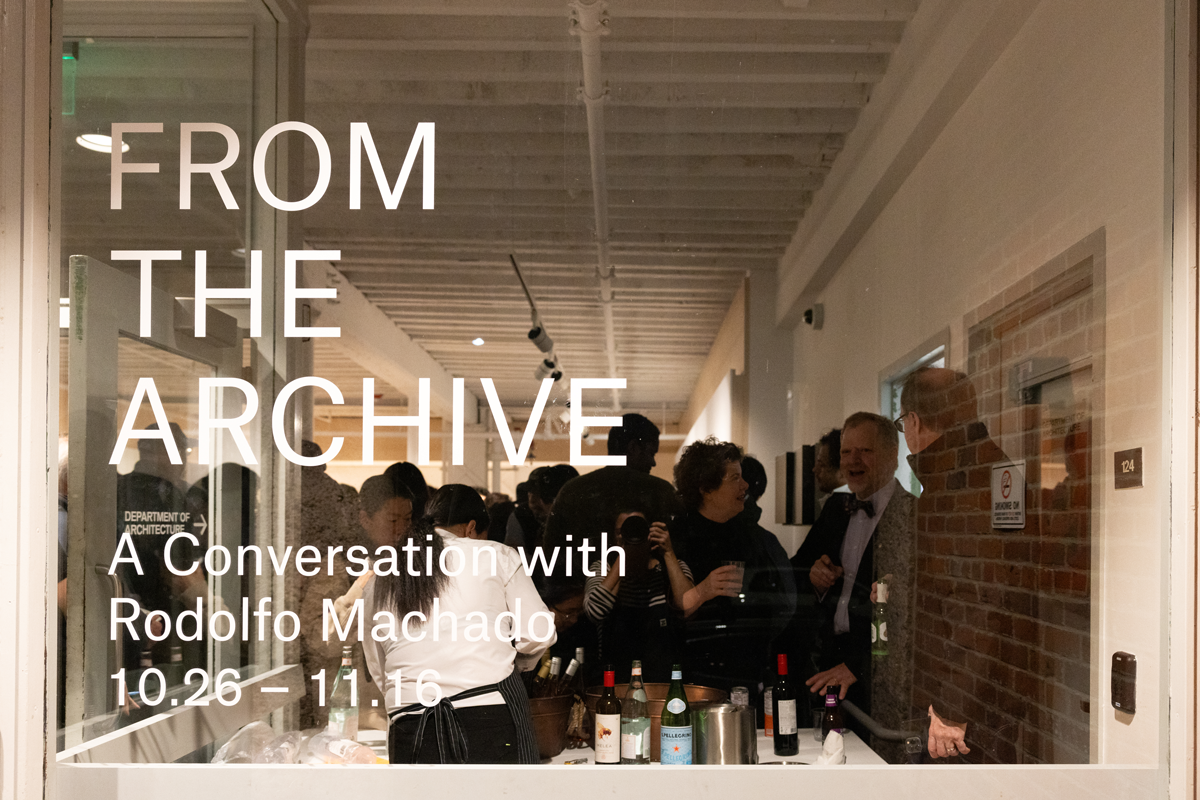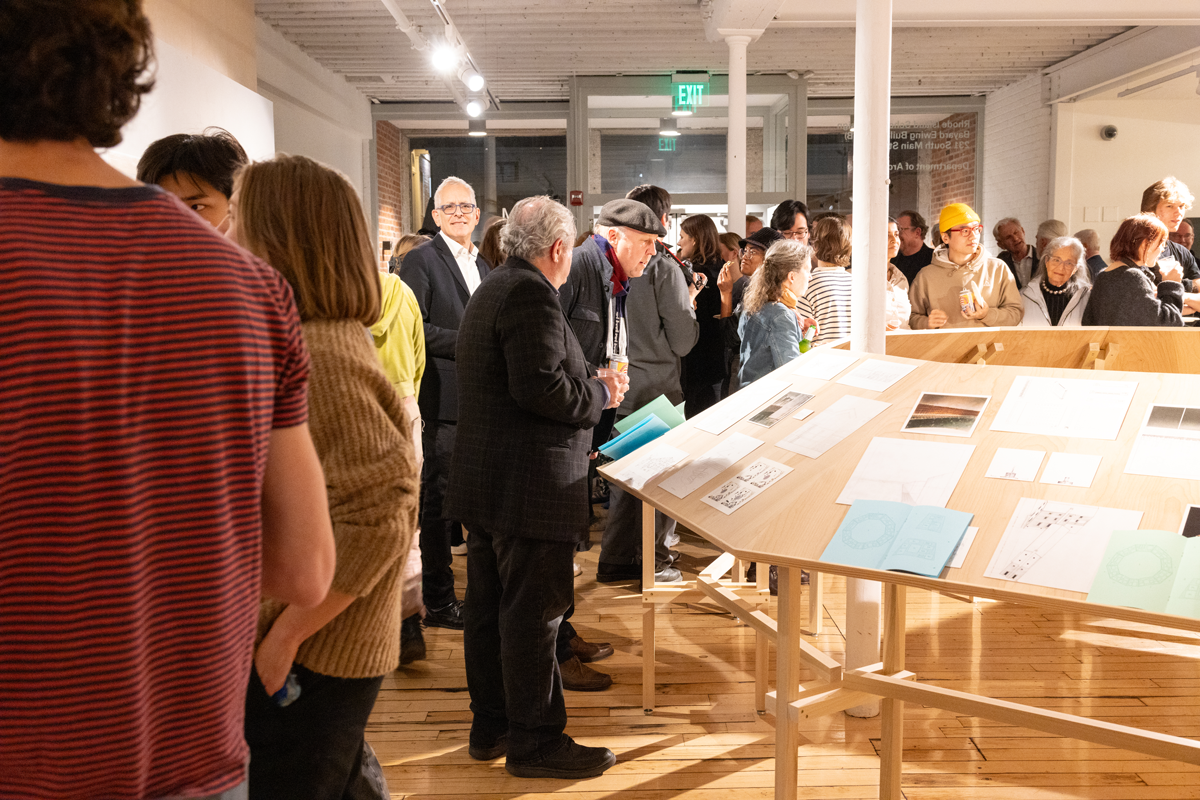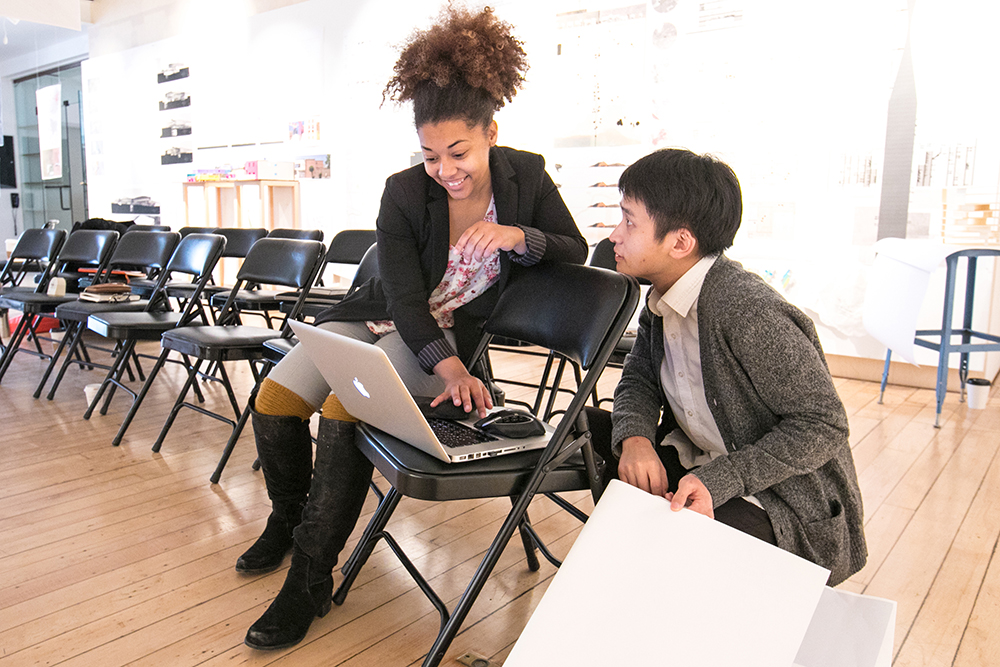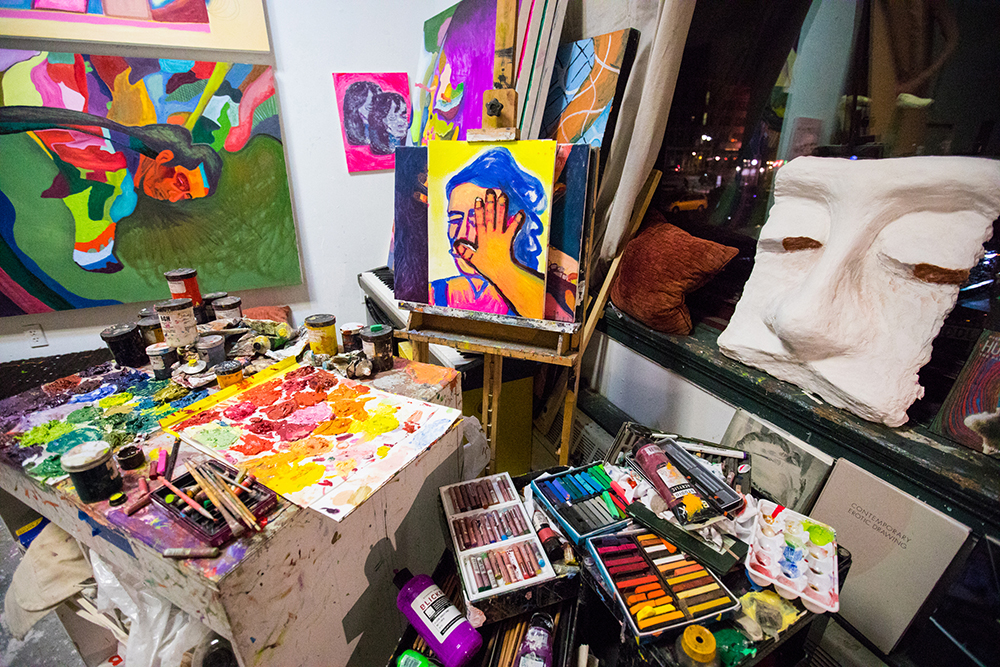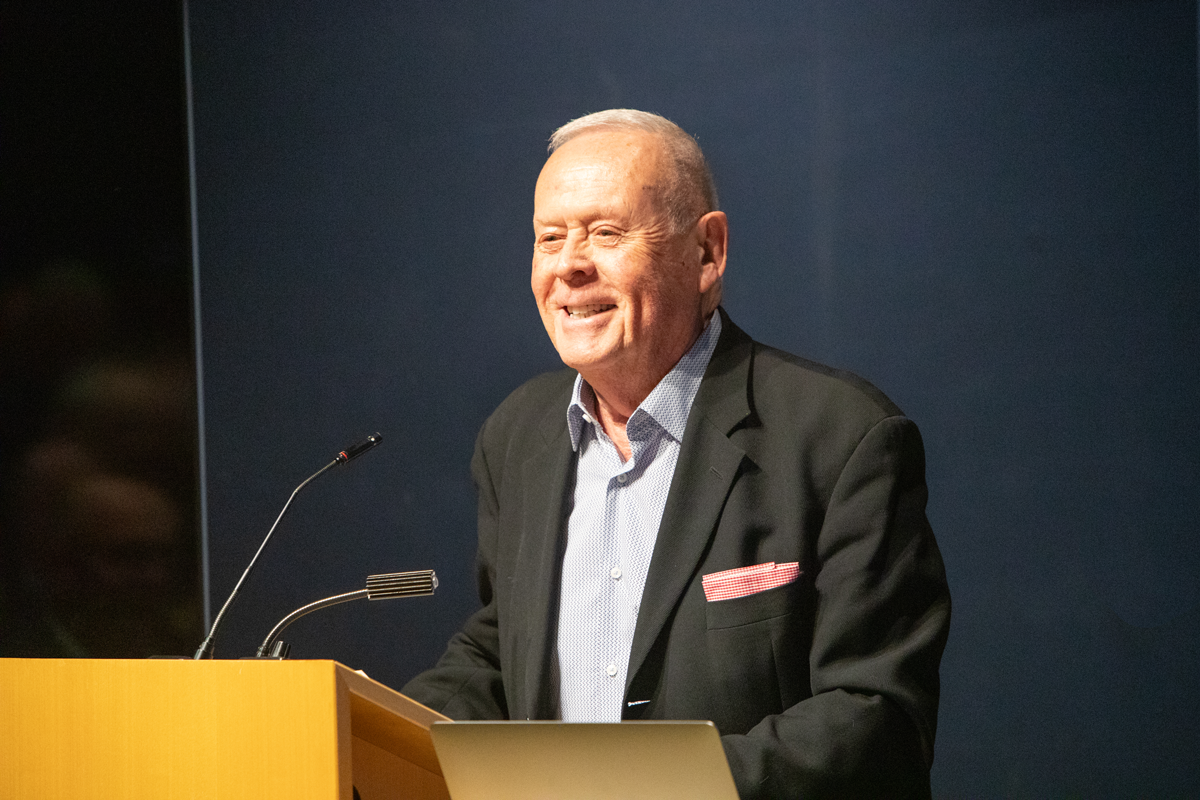
The Past, Alive in the Present
Inaugural Rodolfo Machado Lecture brings generations of RISD architects into conversation.
On Thursday, November 16, the Bayard Ewing Building (BEB) lecture hall was filled with current and former RISD Architecture students and faculty for the inaugural Rodolfo Machado lecture, “From the Archive: A Conversation with Rodolfo Machado.” The lively, standing-room-only crowd spilled into the adjacent BEB Gallery, where 130 artifacts from Machado’s 1978–86 tenure as Architecture department head were displayed on the walls and on tables reminiscent of drafting desks.
Before the speaking portion of the evening began, attendees and students fresh from their studios examined the beautiful drawings, writings, typed course descriptions and other materials on display. The items were drawn from institutional and personal archives of Machado and his former students, who are now leaders in the field. The images, texts and questions posed in the syllabi illustrated the intellectual ferment that characterized Machado’s time as department head.
Moderator Nader Tehrani BArch 86, who was instrumental in coordinating the evening and inviting panelists and participants, said that Machado’s tenure came to be known as “the RISD years” for the impact his leadership had at the college and on the discipline worldwide.
Of that period, Machado said, “The stars aligned, there was the coincidence of the perfect place, the talent… it was a moment in history where the desire was to propose a new architecture.”
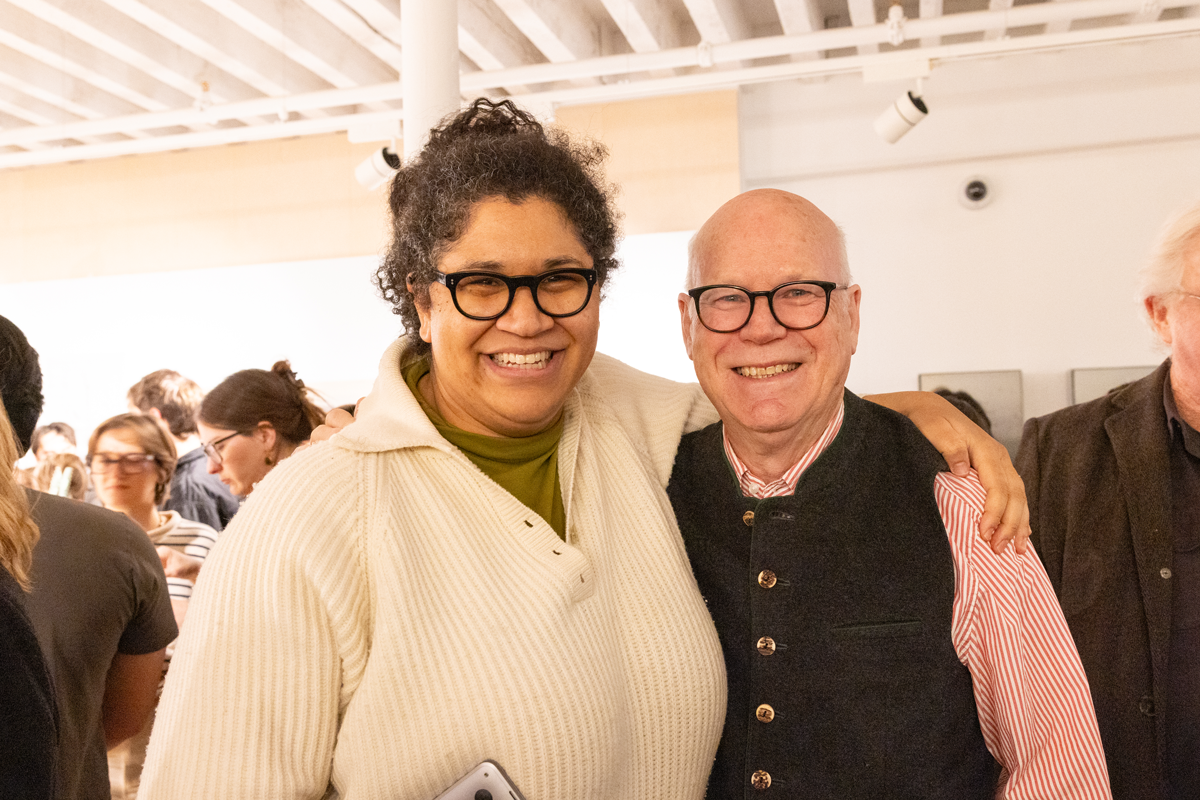
In his teaching and practice, Machado has expanded the thinking about what architecture could do and include. From unbuilt projects proposed by Machado like the Steps of Providence, which would have knit together existing parts of the Providence cityscape, to serious consideration of everyday buildings like parking garages, big box stores and malls, his approach made students think about architecture as a cultural practice and a form of engagement with the public. For the generation of RISD students who worked with him, and for students, architects and urbanists the world over since then, the parameters of the discipline broadened.
To honor him and his impact, generous alumni and friends established the Rodolfo Machado Fund in 2021. The fund enables the Architecture department to host speakers focused on complex issues impacting the conception, design and implementation of architecture globally.
For the inaugural lecture, Machado was joined by a panel of architects and former students including Scott Cohen BArch 83, Jane Duff Gleason BArch 83, Rodolphe El Khoury BArch 86, Michael Maltzan BArch 85/P 24, Elizabeth Ranieri BArch 86, Jennifer Schab BArch 85 and Dan Wheeler BArch 81. Many more distinguished alumni, as well as former RISD faculty including Elizabeth Grossman, Judith Wolin and K. Michael Hays, attended, as did Jorge Silvetti. Silvetti is co-principal at Machado and Silvetti Associates, and with Machado developed a way of thinking about architecture that changed the course of the discipline. Friedrich St. Florian, who taught at RISD for 50 years and served as the dean of architecture during Machado’s tenure, gave remarks via recorded video.
St. Florian described Machado as a catalyst for change and a spiritual leader. “The artistic and intellectual stimulation that he brought to the department was electrifying,” he said, adding that Machado put RISD’s architecture program “on the map.”
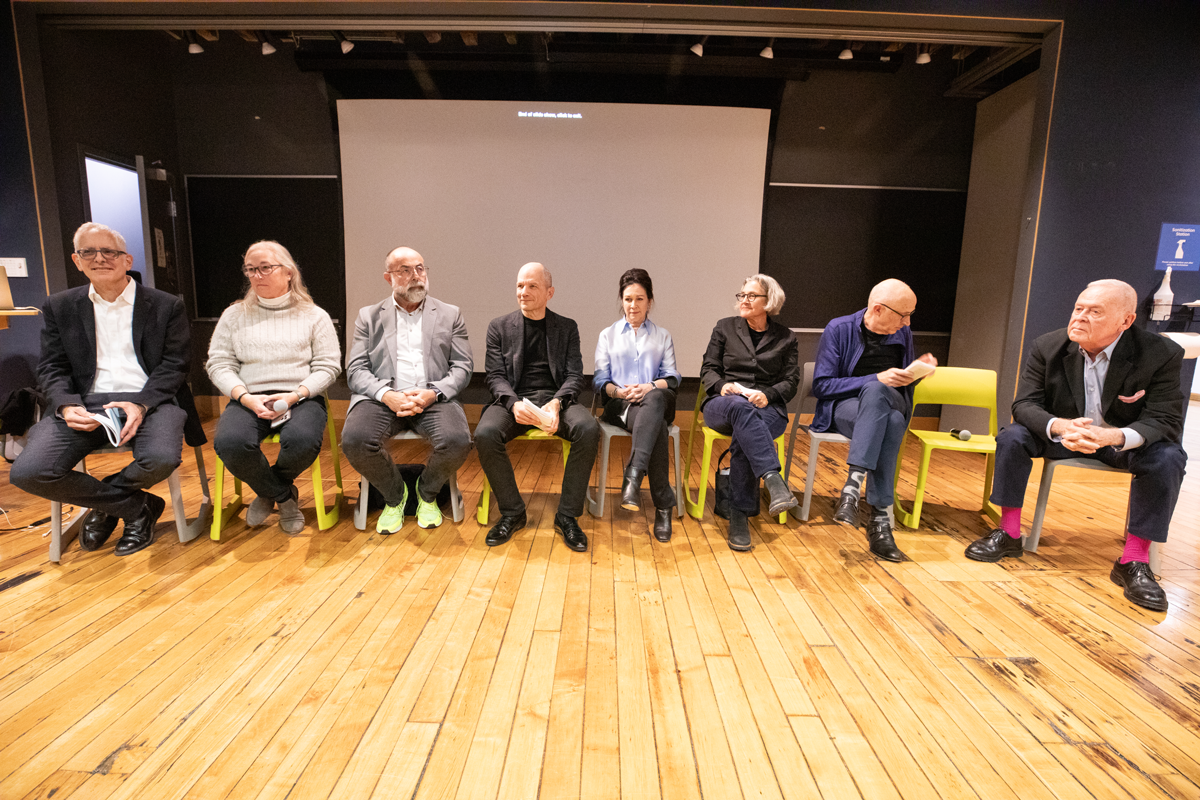
In the wide-ranging panel discussion, Machado’s former students and peers emphasized how his theoretical approach, combined with RISD’s culture, was powerful, and that the questions he raised were relevant to today’s students.
“One thing about the culture at RISD is that you have your eyes open and take in everything,” Duff Gleason said, adding that such openness makes RISD students able to think in novel ways about architectural form and typology.
That quality, combined with fearlessness—such as in students’ willingness to openly critique architectural movements, Hays said—and the inventive spirit that led students to try to find a “third way” out of polarizing debates, Maltzan noted, prepared students to push architecture into the future, or multiple futures.
Just as his students did in the late 70s and 80s, today’s students must grapple with what role architecture plays in cities, Machado said, particularly with the hollowing out of urban centers in the post-Covid era. And in the same way the panelists needed to think about the “mash-up of form, program and space” when they were students, today’s RISD students must take into account economic and social changes and conceptualize ways to pull the “prosaic and the real” into their work.
“Ideas create a kind of courage,” Machado said, “to try new things and believe in the power of architecture.”
Photos by Jo Sittenfeld MFA 08 PH

